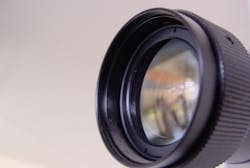Global DIY video surveillance equipment market to top $1B in 2014
According to a research note released this week by market research firm IHS, the global do-it-yourself video surveillance equipment market will top $1 billion for the first time in 2014, with the U.S. accounting for almost 65 percent of total revenue.
Josh Woodhouse, senior market analyst for video surveillance at IHS, said that the world market for DIY video is still fairly evenly split between analog and network solutions. A large portion of end users, however, are still choosing to protect their home or small business by purchasing an analog surveillance bundle consisting of cameras and a DVR from a retailer.
Here is the rest of rest of Woodhouse’s research note discussing the state of the DIY video market:
Now, high resolution alternatives utilizing HD TVI, HD CVI and AHD technologies are becoming available, offering up to full 1080p resolution. These will prove very popular in the consumer market. Unit shipments are forecast to grow rapidly over the next two years as this equipment is increasingly selected in preference to standard definition analog bundles. However, standard definition analog bundles will not disappear entirely as many price-conscious consumers will continue to prefer analog bundles as an entry level system.
The biggest story in the consumer video surveillance market is the growth in demand for network equipment. According to the latest forecasts from IHS Technology, over 11 million consumer and DIY network cameras will be shipped worldwide in 2015.
The vast majority of consumer network cameras are what IHS terms standalone network cameras. These cameras are designed for consumers to operate the camera as a standalone surveillance system without the need for separate recording hardware by utilizing cloud or edge storage. In the future we will see a greater proportion of cameras shipped offering smart home functionality with the potential to connect with third-party or same branded smart home systems. IHS expects smart home capable cameras sold both separately and as part of a larger smart home package to be a major driver in the consumer video surveillance market.
Increasingly the traditional suppliers to the consumer video surveillance market are diversifying with additional security and smart home product lines. At CES and later in 2015, IHS expects to see several suppliers announcing new smart home systems and related enhanced camera functionalities. Video surveillance cameras in the smart home are taking a more prominent role.
Video surveillance cameras in the home are not just for recording break-ins. Remote viewing functionalities make them great for general monitoring. Most systems are motion alert capable and end-users can watch the live or recorded video on their smartphone or tablet, checking if the kids are home from school, or whether their pets are okay. The peace of mind this technology offers is one of its real selling points.
